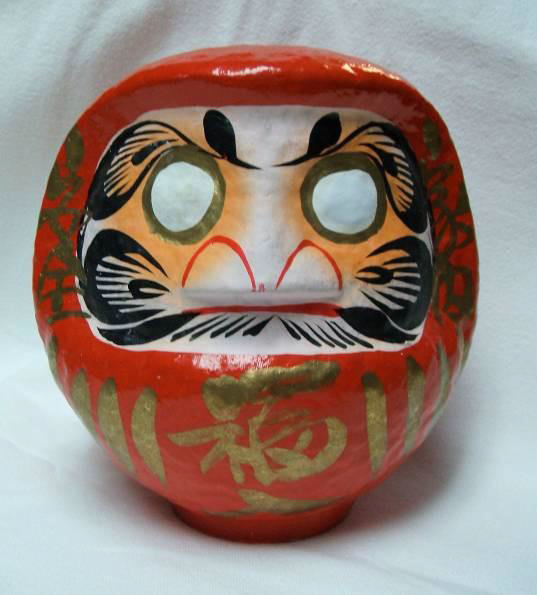The Daruma (dah-roo-mah) is a Japanese good-luck folk toy. It is named for Dharma, the founder of Zen Buddhism, who taught people about the importance of inner peace and orderly daily life. The legend says that Dharma spent so many years meditating for the good fortune of other people that he eventually lost the use of his arms and legs.
Daruma sculptures come in many styles, but they are all squat figures without arms and legs. A “wishing” Daruma is made without eyes and is given to someone to bring good luck. One eye is painted when a wish is made, and the second eye is painted when the wish comes true.

Authentic Daruma owned by teacher

Teacher-created Darumas (traditional and non-traditional)
Goal (Terminal Objective):
Students will create original three dimensional artworks that address personal interests through acquired knowledge of a Japanese art form. These artworks will show students’ understanding and respect of a culture from another part of the world.
Objective:
Students will design an original Daruma (traditional or non-traditional image) and build a three-dimensional symmetrical sculpture of it using Sculpt-it and paint. Students will develop their ideas from their acquired knowledge of the Japanese folk art. Completed art works may be used (in the Japanese tradition) to make a wish for a birthday, the new year, or a new venture.
National Standards:
Visual Arts Grades 5-8 Content Standard 1: Understanding and applying media, techniques, and processes
Visual Arts Grades 5-8 Content Standard 2: Using knowledge of structure and functions
Visual Arts Grades 5-8 Content Standard 3: Choosing and evaluating a range of subject matter, symbols, and ideas
Visual Arts Grades 5-8 Content Standard 4: Understanding the visual art in relation to history and culture
Visual Arts Grades 5-8 Content Standard 5: Reflecting upon and assessing the characteristics and merits
of their work and the work of others
Purpose:
Students will compare and discuss commonalities and differences between their own environments/cultures and those of the Japanese people, referring to good luck symbols in these cultures and how these symbols originated. The construction of the Daruma gives students an opportunity to create an original three dimensional art form.
New Vocabulary:
Daruma, folk art, sculpture, symmetry, interpretation
Materials:
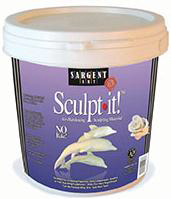
#22-2000 Sculpt-It!WhiteResealable Tub

#66-5421 Acrylic Jar Sets
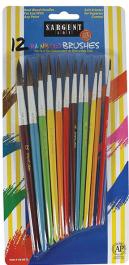
#56-6012 Natural Hair Rainbow Brush Assortment

#22-9801 8 Well Palette w/Brush Recess
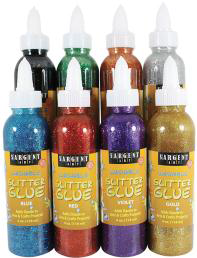
#22-1808 Washable Glitter Glue
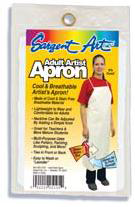
#22-5101 apron

#22-7244 144 ct. Graphite Pencils

#22-9111 11 ct. Sculpting Tool Set Daruma templates
Time: 3 lessons (45-60 minutes each)
Introduction and Motivation (Set):
- Teacher introduces students to the Japanese folk art toy, the Daruma and gives a brief history of its origin.
- Where is Japan? Students look at a world map to see the distance between Japan and the United States. Have you been to Japan? How long does it take to fly to Japan? What countries are near Japan? Is Japan an island? How many people live in Japan?
- Students view authentic Darumas and discuss why they were created and how they are made in Japan. Are they made in factories? Are they made in different sizes? What do all Darumas have in common?
- Teacher introduces new vocabulary.
- Teacher asks students to think about personal good luck objects.
Using a teacher-prepared template, students sketch interpretations of the traditional Japanese Daruma and personal good luck objects for their sculptures.
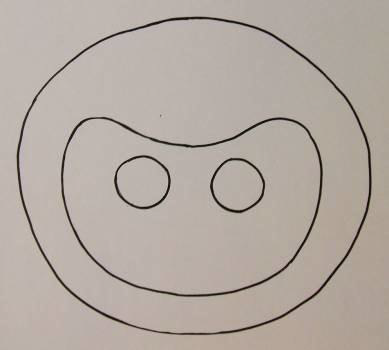 Teacher-prepared template for sketching
Teacher-prepared template for sketchingInstruction:
Lesson 1:
Students use their sketches to construct Daruma sculptures using Sculpt-it. Teacher demonstrates beginning with a ball of Sculpt-it and then forming the stout body under the head. Teacher reminds students of the importance of the eyes. Teacher emphasizes symmetry and reminds students that a sculpture is seen from all sides. Water is used to adhere extra pieces of Sculpt-it to the form. Allow Sculpt-it to dry for 24 hours.

Lesson 2:
How are authentic Darumas painted? Teacher demonstrates using acrylic paints on the sculptures. Students may choose favorite colors to paint their Darumas, whether or not they have chosen to interpret a traditional or sculpt a non-traditional Daruma. Mixing trays are used to make tints and shades of colors.
Students paint their sculptures and allow them to dry.

Lesson 3:
Teacher demonstrates applying gloss medium to the sculptures. After drying, teacher demonstrates embellishment of the Daruma using glitter glue. Darumas are displayed, and time is allowed for students to evaluate their own work and look at the work of classmates.

Activities:
(1) Guided Practice:
- Students learn about the tradition of the Japanese Daruma. Students watch teacher’s step-by- step demonstrations and discuss teacher exemplars.
- Students design an original Daruma using Sargent Art Sculpt-it, acrylic paint, and glitter glue. (Clean up with soap and water. Storage on counters or shelving.)
- Students place pattern under white fabric and trace with pencil, making two copies, one for each side of the windsock.
(2) Independent Practice and Check for Understanding:
- Teacher circulates through the room during student work time, answering questions and offering support as needed.
- Teacher notes students’ understanding of directions and reviews with the class if necessary.
(3) Closure: Students record, by checklist or writing prompt, the rationale for their design. List steps for abstraction and design repetition.
- Students gather in small groups with their Darumas and ask each other questions about the sculptures they have made. Students may make a wish and paint in one of the eyes.
- Students discuss the importance of respect for individuality.
Evaluation:
Level One — The artwork conveys good knowledge of the Japanese Daruma and includes many design elements. The sculpture is symmetrical, very recognizable, and detailed. Craftsmanship is excellent. Student handles materials with confidence and the sculpture has a strong sense of interpretation and originality.
Level Two — The artwork conveys knowledge of the Japanese Daruma and includes some design elements. The sculpture is symmetrical, recognizable, and detailed. Craftsmanship is good. Student handles materials with some confidence and the sculpture shows interpretation and originality.
Level Three — The student has made an effort to convey some knowledge of the Japanese Daruma and include design elements. The sculpture is not symmetrical and not very recognizable. It lacks detail. Craftsmanship is fair. Student handles materials with varied confidence and the sculpture is interpretative but not original.
Level Four — The artwork does not convey knowledge of the Japanese Daruma and does not include design elements. The sculpture is not symmetrical and there is no detail. Craftsmanship is poor. Student needs much support in handling materials. The sculpture is neither interpretative nor original.
Extension:
Students can learn more about Japanese culture (history, holidays, language and writing, games, music, and more) by visiting student websites at http://uni.edu/becker/japanese222.html Students may select a topic of interest, research it, and present information to the class.
Resources:
http://en.wikipedia.org/wiki/Daruma
http://www.japan-guide.com/e/e2104.html
http://www.artelino.com/articles/japanese_mythology.asp
http://jref.com/culture/
Art Consultant



